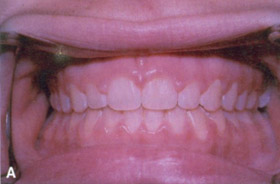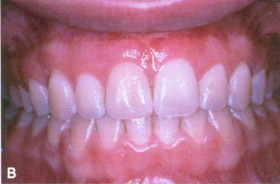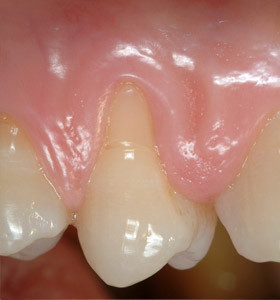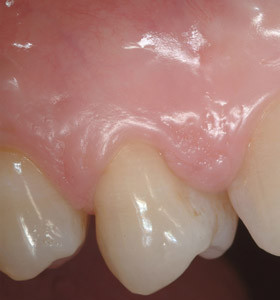What is Aesthetic Gum Therapy?


These are procedures for preserving, repairing and reconstructing gum and bone. Some of these procedures include the treatment of gum disease (periodontitis) while others are to enhance the smile of a patient who has already undergone orthodontic (braces) treatment. These procedures can also be used before doing bridges, crowns or implants.
What are the various types of aesthetic gum therapy?
The procedures can be divided into the non-surgical and surgical therapy.
1. Non-surgical therapy
This is done for the treatment of gingivitis and periodontitis. Gingivitis is the inflammation of gums mostly due to poor oral hygiene while periodontitis is inflammation of the gums leading to loss of bone surrounding the teeth. The gums in both of these cases are swollen-looking, reddish and bleed easily. The patient may also experience bad breath. The treatment for this is periodontal therapy or deep scaling (scaling deep beneath the gums).
2. Surgical therapy
There are a variety of reasons a patient may need gum surgery to enhance his/her smile.
A. Periodontitis
When the non-surgical treatment of periodontitis does not work, surgery may be performed to eradicate the disease in order for the tooth to be preserved..This is certainly more desirable than having a missing space. Nowadays, this type of gum surgery is often accompanied with bone grafting procedures to partially if not almost fully restore the amount of supporting bone that was lost due to periodontitis.
B. Gummy smile or irregular gum line
This term refers to a condition when too much gum is visible when the patient smiles. During a normal full smile, the upper lip should rest just at the gum line of the upper front teeth and the lower lip at the biting edges (or tips) of the same upper front teeth If the upper lip is short and rests higher up, then more gum will be shown during a smile. Gum surgery can lengthen the upper front few teeth to make them look longer and hence reduce the effect of too much gum being shown when smiling. Sometimes other procedures such as orthodontics(braces) or orthognathic surgery( jaw surgery to align the jaws) may also be needed to address a severe gummy smile situation.
C. Gum recession
This is when gum is lost or receded and can occur on only one tooth or many. Most of the time this is due to overbrushing with a medium or hard toothbrush. It can also be due to poor oral hygiene or periodontitis. Gum surgery can be performed to graft gum tissue back to its original contour. Success of treatment, however, depends on the severity of the recession and the presence of periodontitis. Most of the time the gum graft is taken from the patient’s own palate though sometimes an external graft may be used.

Before

After
D. Preserve the bone and gum in preparation of an implant or bridge.
The planning for replacing a tooth by an implant or bridge is always done before the unsalvageable tooth is taken out. This is because, once a badly broken down or infected tooth is taken out, the bone that surrounds it shrinks as the socket (hole that is left after the tooth is taken out) heals. Hence, the patient is left with a flattened or thinned missing space that may be make the ensuing implant or bridge to be placed not look natural. Gum surgery can be done concurrently as the tooth is being taken out to preserve as much as possible the bone that surrounded the tooth so that replacement is easier and gives a more satisfactory result.
E. Enhance the outcome of bridges or implants.
Sometimes if the shrinkage has already occurred as the extraction of the tooth was done some time ago, gum surgery can also be done to graft back the gum or bone that is lost. If the amount of bone that is lost is too great though, sometimes an oral surgeon will be called in to transplant bone from another part of the patient’s jaw to the deficient site.
F. Overgrowth of gum due to medication that a patient has to be on.
Some patients, who are on long term medications like those taken by kidney transplant patients or nifedipine which is a high blood pressure medication, may experience overgrowth of the gums as a side effect especially if the oral hygiene is poor. Gum surgery can correct that condition to restore the smile and confidence of these patients.
For more information on aesthetic gum surgeries and procedures, please ask your local Periodontist or check out www.perio.org.
